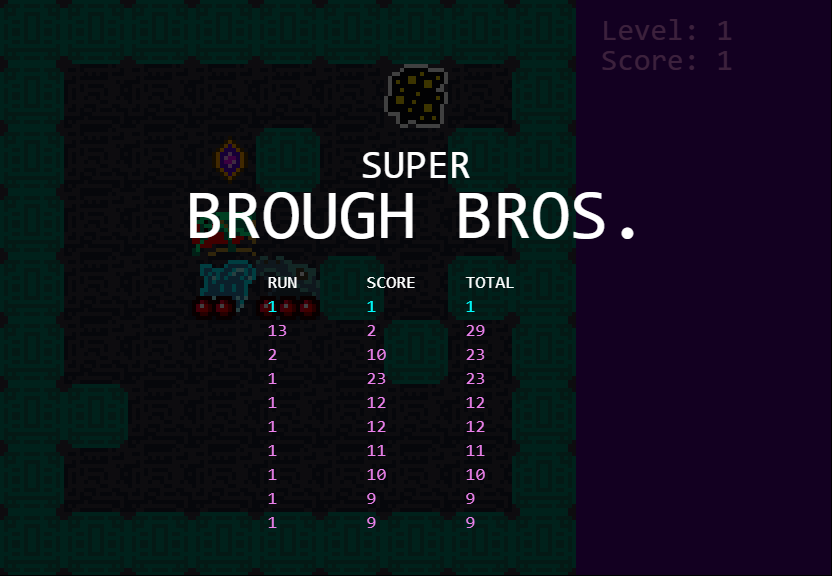Stage 6 - Treasure & Score
To give our game some replayability, we'll add a high score mechanic. The player will pick up a treasure to gain a point, but doing so will spawn another monster. Each level will have 3 treasures. This system will be supported by ascore0Drawing the treasure sprite
You have plenty of options for representing treasure. Gems, jewelry, piles of gold, treasure chests, whatever.
For gold, you typically want to use a yellowish-orange base with very high contrast. For gems, pick bright colors and angular highlights/shadows.
For gold, you typically want to use a yellowish-orange base with very high contrast. For gems, pick bright colors and angular highlights/shadows.

Generating treasure
To achieve our treasure mechanic, we need very little: mainly a boolean flag to each tile denoting it has treasure on it. If a tile has treasure, the treasure sprite will be drawn on top.map.js
tile.js
...Keeping score
Let's make the treasure meaningful. We need to initialize ourscorescoretreasuregame.js
tile.js
drawTextgame.js
High scores
If we have a score, we certainly need a high score board. The following additions add a score array to a browser storage mechanism calledlocalStoragelocalStorageSince everything you put in
localStorageFirst let's try to grab the scores, whether there's some there or not.
game.js
parseNow let's write the function to add a score.
game.js
Our
addScoreHere's the breakdown of what we're doing:
- retrieving our scores
- creating a new to be added onto the list later
scoreObject - doing a to get the
poplastScore - if that score is active, we'll add our current run score to it. otherwise just put it back with
push - put our new score back on the list with
push - all our scores and put them back into
stringifylocalStorage
game.js
tile.js
localStorageLet's display them.
game.js
...drawTextLet me break it down:
- We get the scores and then only continue if we have some
- We draw a header row (RUN SCORE TOTAL) in the very middle of the canvas. There's a new utility method which we'll cover in a moment
rightPad - Next we take the most recent score off the end, sort the scores in descending order, and put that most recent score back at the beginning. This way you always see the last score at the top and in a different color... accomplished a few lines down by .
i == 0 ? "aqua" : "violet" - We loop over at most 10 scores and draw each one slightly lower on the screen with
canvas.height/2 + 24 + i*24
rightPadutil.js
 The next section adds some nifty animation and screenshake.
The next section adds some nifty animation and screenshake.